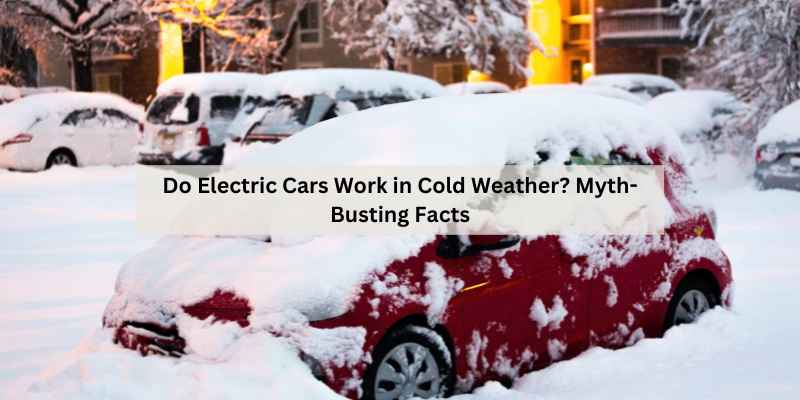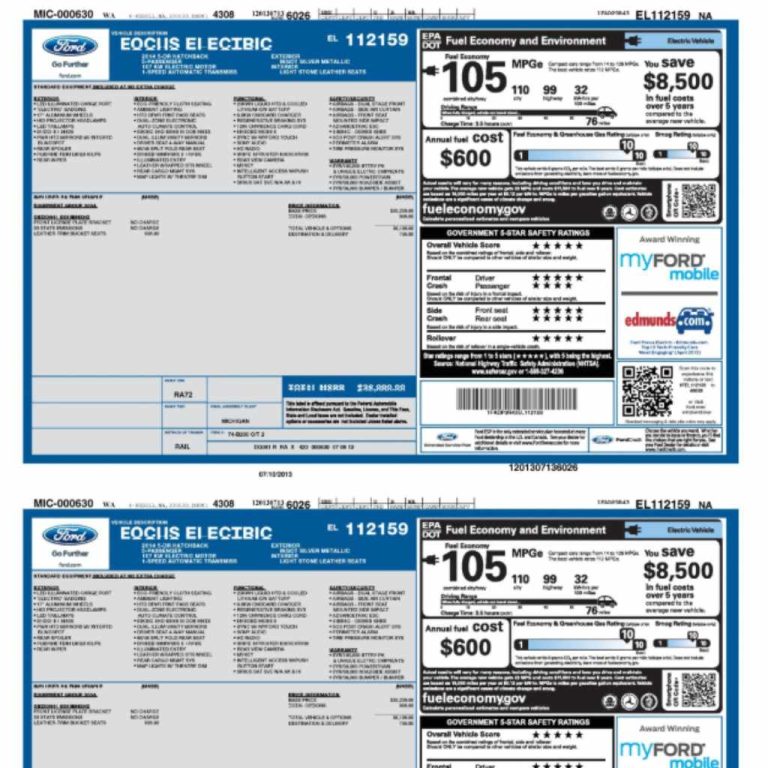Do Electric Cars Work in Cold Weather? Myth-Busting Facts
Electric cars do work in cold weather, but their range can decrease significantly. Battery performance may also be affected by low temperatures.
Cold weather presents unique challenges for electric vehicle (EV) owners. As temperatures drop, many drivers worry about reduced battery efficiency and driving range. EVs typically lose about 20% to 40% of their range in freezing conditions. This decline happens because cold temperatures slow down chemical reactions in batteries.
Heating systems also draw energy, further impacting range. Despite these challenges, many electric vehicles are designed to operate efficiently in various climates. Some manufacturers implement features like thermal management systems to help maintain battery performance. Understanding how to care for your EV in cold weather can help you maximize its capabilities and enjoy a smoother driving experience.
Electric Cars And Cold Weather: The Reality
Electric cars can face challenges in cold weather. The battery performance may drop significantly. Cold temperatures slow down chemical reactions in batteries. This can lead to reduced driving range.
Heating systems use a lot of energy. This can further decrease battery life. Drivers may need to plan for shorter trips. Warming up the car before driving can help. Using seat heaters instead of cabin heat saves energy.
Many electric vehicles have special features. These features help manage battery performance in cold climates. Always check the manufacturer’s recommendations for best practices.
Comparing Electric And Gasoline Vehicles In Winter
Electric cars face range limitations in cold weather. The battery’s performance drops in low temperatures. Gasoline vehicles, on the other hand, perform better in winter. They are less affected by the cold.
Cold starts present a challenge for gasoline engines. They may struggle to start in freezing temperatures. Electric cars do not have this issue. They start smoothly, even in extreme cold.
| Feature | Electric Vehicles | Gasoline Vehicles |
|---|---|---|
| Range | Reduced in cold weather | Generally stable |
| Cold Start | No issues | May struggle to start |
Myth-busting Common Misconceptions
Many people think electric cars struggle in cold weather. This is a myth. Electric vehicles (EVs) offer an instant torque advantage. They can accelerate quickly, even in low temperatures. This means drivers can enjoy smooth rides regardless of the weather.
Preconditioning is a great feature in EVs. It warms up the car while it’s still plugged in. This helps the battery stay at a good temperature. It also makes the cabin cozy before starting a drive. Preconditioning improves battery efficiency and driving range. Cold weather does not stop electric cars from performing well.
Key Features For Winter-ready Electric Vehicles
Battery thermal management is crucial for electric cars in cold weather. It keeps the battery at an optimal temperature. This helps maintain performance and range. Good systems use heating elements and insulation.
Cabin heating innovations enhance comfort during winter drives. Many electric vehicles use heat pumps. These systems are more efficient than traditional heaters. They draw heat from the outside air, even in cold conditions. This saves battery power and extends driving range.
Real-world Experiences: Electric Car Owners Speak Out
Many electric car owners share their experiences in cold weather. Some report a decrease in range. Battery performance may drop significantly. Owners recommend parking in a garage to keep the car warm.
Using a pre-conditioning feature helps warm the battery and cabin. This can improve range and comfort. Tires should be checked regularly. Cold weather can affect tire pressure.
Charging stations may be less available in winter. It’s wise to plan trips carefully. Carrying an emergency kit is also a good idea. This ensures safety during unexpected situations.
| Tips for Electric Cars in Cold Weather |
|---|
| Park in a garage |
| Use pre-conditioning |
| Check tire pressure |
| Plan trips carefully |
| Carry an emergency kit |
How To Maximize Electric Car Performance In The Cold
Proper maintenance is key for electric cars in cold weather. Regularly check the battery health. Cold temperatures can reduce battery performance. Ensure tires are properly inflated for better traction. Also, keep the car clean to prevent ice buildup.
Smart charging practices help maintain battery life. Charge your car indoors if possible. This keeps the battery warm. Use a slow charger for overnight charging. It is safer and more efficient. Avoid letting the battery drop too low. Charging it often helps maintain optimal performance.
Future Developments In Cold Weather Ev Technology
Battery chemistry is improving to handle cold weather better. New materials help batteries keep their charge in low temperatures. This means electric vehicles (EVs) can drive longer distances even when it’s cold outside.
Innovative heating solutions are also being developed. These solutions help maintain battery temperature and performance. Better insulation and heat pumps can warm the cabin without draining the battery. This keeps passengers comfortable while saving energy.
As technology advances, EVs will perform better in extreme weather. Drivers can expect more reliable and efficient vehicles in the future.
Choosing The Right Electric Car For Cold Climates
Choosing an electric car for cold climates requires careful thought. Battery performance is crucial in low temperatures. Cold weather can reduce range significantly. Heated features help improve comfort and efficiency. Look for models with good insulation and heat pumps.
Check for tire options that perform well in snow and ice. Some vehicles offer winter driving modes for better traction. Regenerative braking can also be useful in slippery conditions.
| Model | Key Features |
|---|---|
| Tesla Model 3 | Long range, efficient heater, all-wheel drive |
| Ford Mustang Mach-E | Good winter tires, heated seats, all-wheel drive |
| Subaru Solterra | Great traction, all-wheel drive, rugged design |
Frequently Asked Questions
Do Electric Cars Lose Range In Cold Weather?
Yes, electric cars can lose range in cold weather. Battery performance decreases as temperatures drop. Cold air affects the chemical reactions in the battery, leading to reduced efficiency. Additionally, using heating systems inside the car consumes extra energy, further decreasing the overall range.
How Do Electric Vehicles Perform In Snow?
Electric vehicles can perform well in snow, thanks to their weight distribution and low center of gravity. Many models come with advanced traction control systems. However, winter tires are recommended for better grip and handling. Always consider road conditions and drive cautiously in snowy weather.
Can I Charge My Electric Car In Winter?
Yes, you can charge your electric car in winter. Most charging stations are designed to operate in various temperatures. However, charging may be slower in cold conditions due to battery chemistry. It’s wise to keep your car plugged in during extremely cold nights for optimal battery health.
What Is The Impact Of Cold On Battery Life?
Cold temperatures can temporarily reduce battery capacity and performance. However, it doesn’t permanently damage the battery. Regular usage and proper charging habits can mitigate these effects. Many electric vehicles have thermal management systems to help maintain optimal battery temperature in cold conditions.
Conclusion
Electric cars can perform well in cold weather with the right care. Factors like battery management and preconditioning play a vital role. Understanding these elements helps maximize performance and range. As technology advances, electric vehicles are becoming more adaptable. Embracing this change can lead to a more sustainable driving experience year-round.






